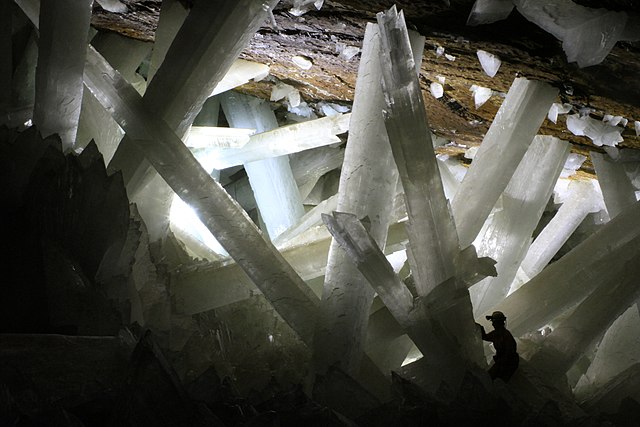NETTNETT TAKE-OVER * GU: LAST NIGHT A CRYSTALLOGRAPHER SAVED MY LIFE
NETTNETT RADIO TAKEOVER
A REINTERPRETATION OF FLORILEGIO BY NNR GUERRILLA RADIO MAKERS
GU: LAST NIGHT A CRYSTALLOGRAPHER SAVED MY LIFE

Gu is a Chemist with a particular fascination for materials and solid state chemistry. Author of physics and chemistry textbooks. She currently collaborates as a music selector for the border label Facade Electronics.
She is also a past contributor to nettnett radio.
I have always thought that crystals have a lot in common with music.
Origins
Morphology
Structure
Holes
Patterns
Repetition
I like to find analogies between them. I like it even more when those similarities become evident in the title of a piece of music or when they provide inspiration to the producers.
Listening is one of many means of understanding our deep physical interconnectedness with the natural world, and it is intimately related to human creativity and intelligence.
Some philosophers have studied the connections between our emotions, music and the natural world; we have a deep-seated emotional connection with nature.
Composers of many generations and from regions all over the world have tried to inspire emotions in the listener through nature in music, and crystals are no exception. This has been recognized for centuries and these inherent connections have been exploited to convey emotion and meaning through their creative work.
What is a crystal and why does it remind me of a musical piece? In very simple terms, a crystal is an ordered and repetitive arrangement of atoms, ions or molecules. An ordered and repetitive arrangement? Too much similarity.
Repetition as a musical aspect has been widely exploited and it is present in many musical pieces; not in any particular genre, nor in any particular historical period, it is found in ancient and modern music.
By using this aspect as a resource, it is even possible to create musical illusions, such as Shepard’s ladder, which is often compared to a never-ending staircase, in which you seem to climb continuously (or descend, depending on the direction in which you follow the rungs) and yet end up where you started.
Similarly, we conceive that the positions in space of the structural units of a crystal define the points of an infinite lattice. Although any real crystal has only a finite number of atoms, this number can be very large, so it is often useful to imagine that the crystal and its corresponding lattice are infinite, extending throughout space.
Some musical pieces are perfect loops, infinite, like a crystal.
Crystals are everywhere, on our planet and in space, in our body. For some people, the relationship between crystals and themselves is not only physical, but also spiritual.
Whether individually or collectively, as part of a meditation or ritual, in many cultures there is a close relationship between music and spirituality.
Although ordered, crystals are not perfect, they contain defects that give them very particular physical properties, defects such as dislocations that, if observed through a microscope, give us beautiful patterns, such as Moiré patterns.
As in crystals, in music imperfections can also produce beautiful results, even some imperfect element, or what we define as such, can produce wonders, such as operas that play with cadences to achieve complex and explosive pieces.

Some crystals refer us to fictional stories, who hasn’t thought of Superman when seeing the crystals of Naica. Who hasn’t had fantasies observing the beautiful geodes? Fictional stories that inspire musical creation as well. Crystals inspire just because they are beautiful.

We propose new ways to study them, we develop new models, just as we do with music, we look for new forms of expression, an example of this is the work of Lorenzo Senni, who by experimenting with elements such as repetition, arpeggios and superimpositions, has managed to present new forms of techno music.
Why do crystals form? It would seem to be a phenomenon that goes against the laws of thermodynamics, things tend to move towards a more disordered state, why do crystals create order? It so happens that when a crystal is formed, it releases heat that is redistributed to its surroundings. It is this redistribution of heat that is the increase in entropy that we are observing, even though the physical order of these pieces of matter is increasing.
I like to think that the creation of musical pieces often happens this way, as if their creator or composer wanted to go against what is already established.
Very complex techniques have been developed to study them, and yet we continue to use models as simple as considering that the particles are spheres that are arranged in space, leaving holes with certain geometries.
Tetrahedral, octahedral holes, as if someone arranged them perfectly.
Regardless of the extensive technological development, new genres, instruments, or modes of communication, music maintains its essence and our bond with it seems to be infinite, arranged in a perfect way.
Crystals inspire, music inspires.
Note: The musical selection that complements this text was originally made for the radio program “Islas Resonantes”, hosted by Cinthya García Leyva. Part of this text was read during the episode “Cristales y sonido” (Crystals and Sound).
